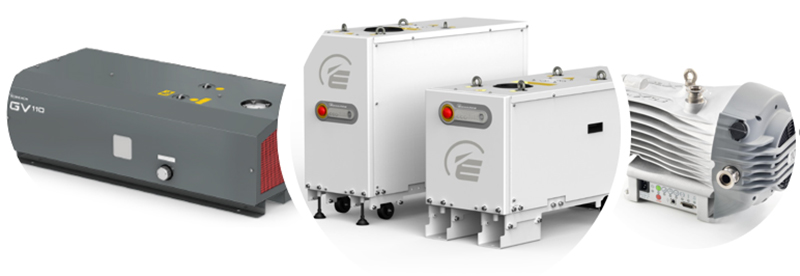Freeze drying (lyophilization) is a dehydration technique where a product is dried under vacuum at low temperature. The major advantage of freeze drying is that thermo-labile components, like proteins, flavours or colours, are preserved and the original size and shape of the sample is maintained. Together with the refrigeration system, the vacuum system forms the heart of a freeze dryer; its main purpose being to evacuate the system down to the processing working pressure. Furthermore, the vacuum system removes all non-condensable gases during the drying process.
Conventional oil-sealed pumps always bear the risk of oil back-streaming to the chamber and thus potentially contaminating the freeze-dried product. To avoid this, dry pumping technology can be used alternatively. Pump types typically used here are scroll pumps for smaller volumes and screw or claw pumps for larger systems. Apart from generating an oil-free environment, dry pump technology - like the Edwards nXDS/XDS scroll pump series, GXS or EDS screw pumps as well as GV claw pumps - offer a range of benefits, e.g. superior noise and vibration levels, a compact footprint and less energy consumption.

Edwards dry pumps used in freeze drying applications. Left: GV110 claw pump, middle: GXS screw pump and pump/booster combination, right: nXDS scroll pump.
Read the complete application note here to get a detailed insight into the freeze drying set-up as well as an explanation of the different process steps that take place.
